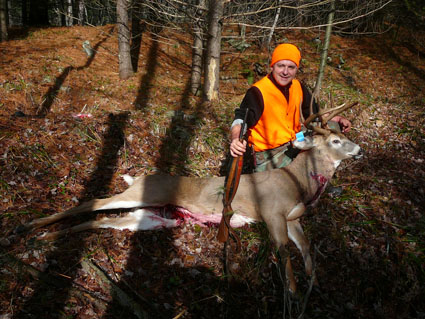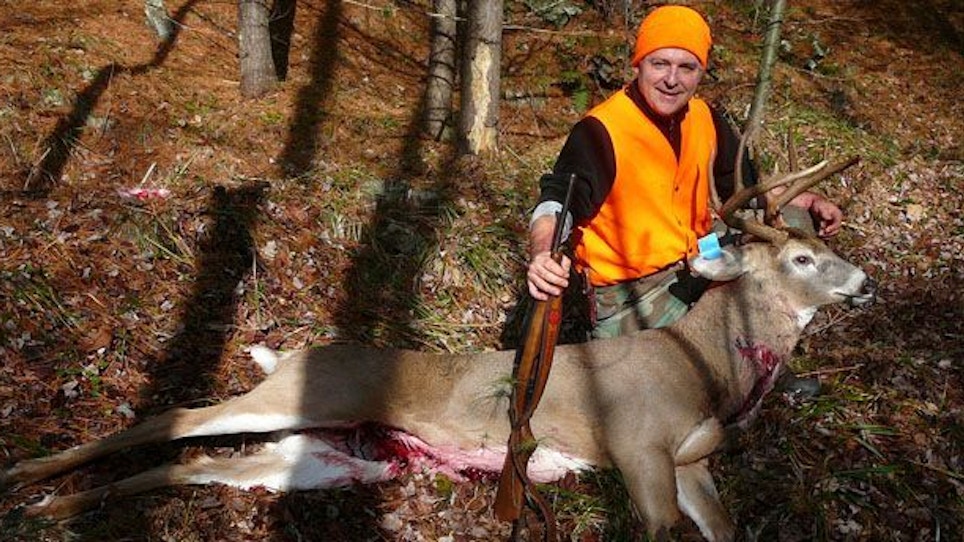 Most every hunter has missed a deer that they should have killed. After a miss it’s common to lie awake at night in your bunk staring at the ceiling while thinking about what went wrong. That can go on for a while if you miss on opening day.
Most every hunter has missed a deer that they should have killed. After a miss it’s common to lie awake at night in your bunk staring at the ceiling while thinking about what went wrong. That can go on for a while if you miss on opening day.
But when you kill a deer, especially a big one, you think about it for a lot longer. You think about where it happened while drinking your coffee. You think about when it happened while driving your car. And you think about how it happened while walking your dog.
I thought about a buck that I killed almost every day for a year. I went over every detail in my mind. When I finally realized that I killed that buck because of something I didn’t do, I decided to write about it. And then the story wrote itself.
I was dogging on Monday morning of the second week of the season. The dog was a hundred yards to my left when it let out a short yip. I immediately stopped and looked at the woods around me, hoping to find a spot nearby to run to where I could see better or farther.
But it was already too late. The dog let out a long howl and the chase was on. Within seconds I heard twigs and branches snapping so loud and fast that I thought the deer and dog where coming in my direction at full speed.
Then I saw the bodies of two large deer racing over a ridge 50 yards away. The woods were too thick for me to shoot, so I aimed at a two-foot-wide opening between some pine trees, thinking the deer would run through on their way by.
I thought to myself, pull the trigger when you see something brown in that opening, and I very quickly had my chance. It was a doe, and at the shot she immediately changed direction and ran broadside to me at 20 yards away. I swung the bead of my Ruger 44 Magnum back on her front shoulder and my finger touched the trigger, but I immediately decided not to shoot a second time.
That split-second decision was the reason that I killed the 10-point, 241-pound buck that was with the doe.
I could instantly see that the doe was not moving through the woods in a normal way. She did not limp, but her walk wasn’t fluid. She didn’t move slowly, but she wasn’t leaping and bounding, either. She didn’t hunch in pain, but neither was she elongated with fear and adrenaline and speed.
I knew the doe was dead on her feet.
I knew because of the time I’ve spent watching deer while hiking in the woods before and after hunting season. I knew because I forced every one of those deer to run away when I saw them. I knew because I watched their body language when they ran. I knew because I raised my arms pretending to hold and point a rifle at them until they ran out of sight.
I was still holding my rifle upright on the doe that Monday morning when I decided not to shoot. Instead I slowly moved my head a quarter turn to the left, the way a rabbit does to check the blind spot behind it.
I saw the buck standing with his rack and head and big shoulders in the same opening where I fired the shot at the doe. What had been my window of opportunity was now his doorway to death. But instinct told him to stop. At that moment he was thinking the same thought I just had. As he lowered and tilted his head in her direction, I imagine he was thinking, something is wrong with that doe.
Then the dog howled and the buck snapped his head back to the sound, and I swung the rifle barrel around to the buck’s shoulder.
As I pulled the trigger he was having his final thought. It was the same thought that many deer have just before they die.
He was wondering, what should I do now?
Three things made him have that thought — the shot I fired at the doe because he didn’t know where it came from, the body language of the doe because he had never seen a deer run that way before, and the howl from the dog because it meant he had to decide which way to run. But he could not decide what to do because he was thinking about all three things at once.
That’s why he stopped in that opening. That’s why he was standing still. But that’s not why I killed him with one shot.
It was because of the shot I didn’t fire.
If I had fired a second shot at the doe, the buck would have seen me and would have vanished from that opening in the woods before I looked his way.
I walked over to his body on the ground. Thirty seconds had passed from the moment I had first seen him.
LW Oakley lives in Kingston, Ontario and is the author of Inside The Wild, available at the publisher’s website www.gsph.com






